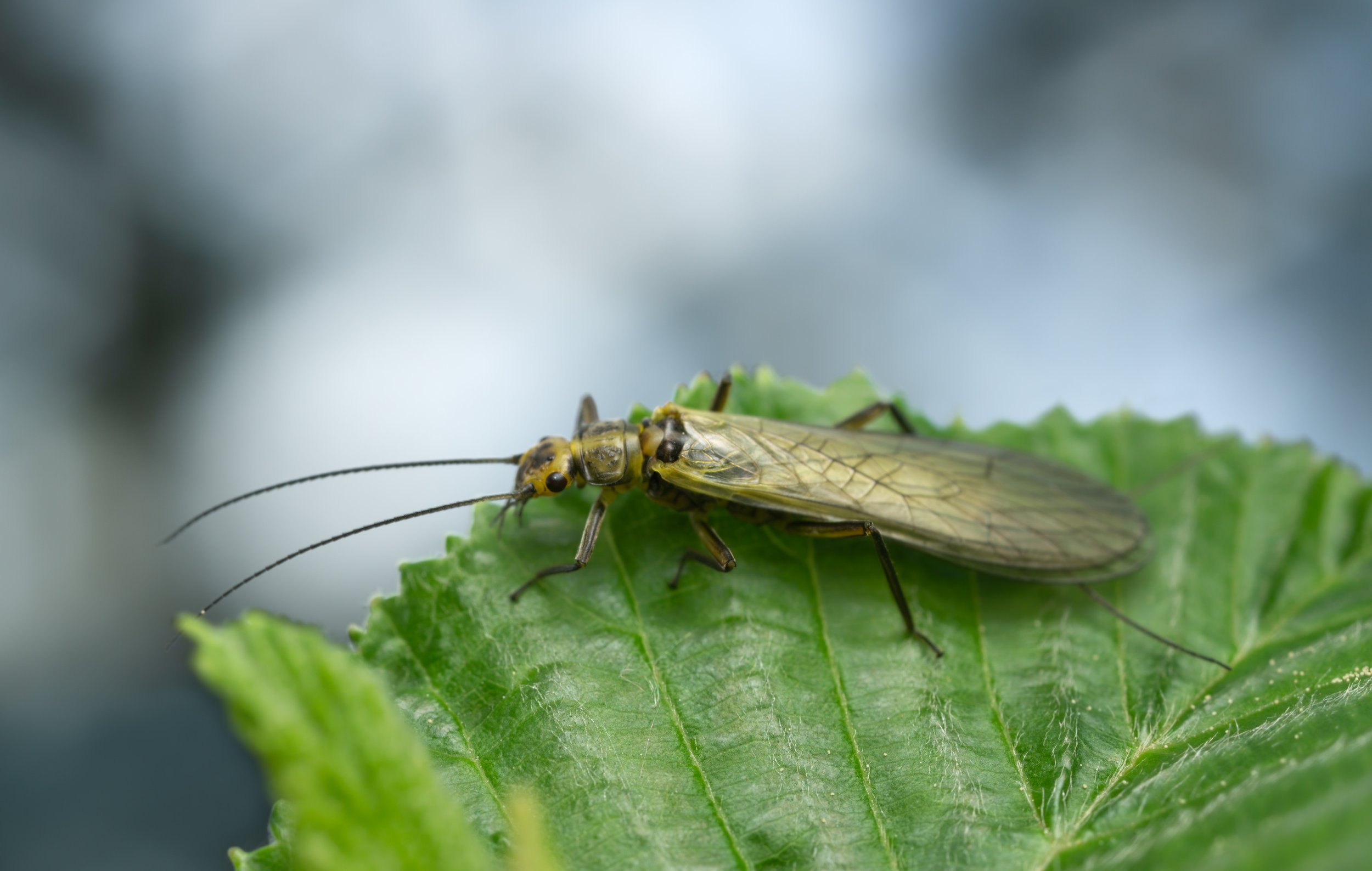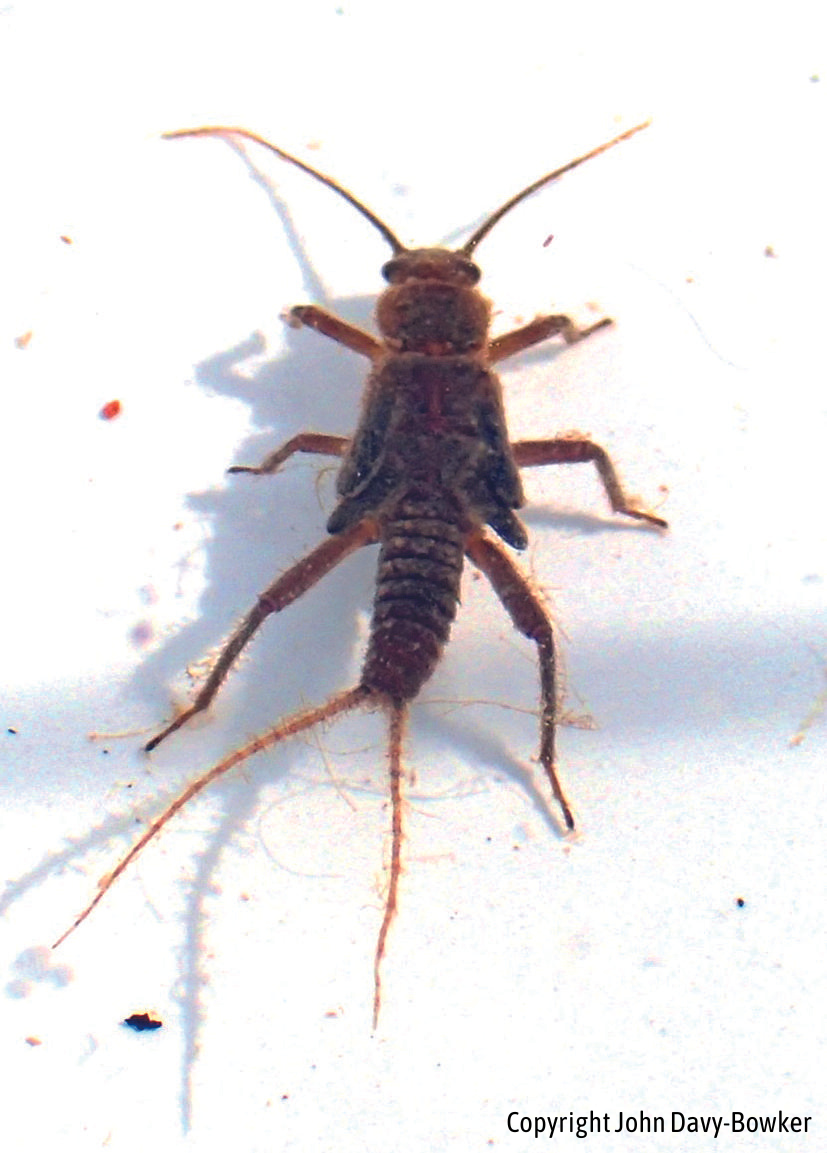
Plecoptera
Stoneflies
Insects in the order Plecoptera are also known as stoneflies. As the name suggests, stoneflies are typically found in stony rivers and streams, although some species occur on the shores of stony lakes and in ponds and marshes. Adults are commonly found crawling amongst stones and vegetation on the bankside rather than in flight. They fold their wings flat over their bodies when at rest.
Conservation
A number of stonefly species have been identified as of ‘principal importance’ in the UK. The Northern February Red (Brachyptera putata), which is only found in Britain, is on the list of priority species in England, Scotland and Wales. The Rare Medium Stonefly (Isogenus nubecula) is on the Scottish list of species. The Northern Ireland priority species list includes three stonefly species: Dinocras cephalotes, Leuctra nigra and Nemurella pictetii.
Inclusion on these lists means that public bodies have an obligation to support conservation measures for these species.
Life Cycle
A stonefly begins its life as a nymph underwater, undergoing several moults as it grows. Eventually, the fully grown nymph crawls out of the water and sheds its skin to emerge as a winged adult stonefly. Female adult stoneflies drum their abdomens on a surface to attract a mate. Mating takes place on the ground or on vegetation, then eggs are then deposited onto the water surface, and sink down to the river bed.
Riverfly Monitoring
Volunteers taking part in the Riverfly monitoring projects collect samples of freshwater invertebrates and record the numbers of individuals found within easily identifiable groups. One of these groups is the stonefly larvae, which can be identified by features such as their two long tails and long antennae.
There is also a Plecoptera Recording Scheme to assess the distribution and status of stonefly species — see here.
Dinocras cephalotes nymph
Isoperla grammatica nymph
Nemurella picteti nymph
Plecoptera Guides
As well as the guides listed below, it is worth checking second-hand bookshops and online outlets, as they can be a good source of identification books aimed at the hobbyist or angler.
Key to the Adults and Larvae, with notes on their distribution, life histories and ecology:
Macadam, C.R., Feeley, H.B. & Doe, J. 2023 British and Irish Stoneflies (Plecoptera). Freshwater Biological Association.
The development of this easy to use, fold out AIDGAP guide, was supported, and is endorsed by, The Riverfly Partnership:
Pryce, D., Brooks, S. & Macadam, C. 2007 Guide to British Stonefly (Plecoptera) families: adults and larvae. Field Studies Council.
In-depth guide to species-level identification:
Hynes, H.B.N. 1977 A Key to the adults and nymphs of the British Stoneflies (Plecoptera). Scientific publication No.17 3rd ed. Freshwater Biological Association.
Plecoptera species found in Britain
You can download the Plecoptera species list here.
Capniidae
Capnia atra
Capnia bifrons
Capnia vidua
Capnia vidua subsp. anglica
Chloroperlidae
Chloroperla tripunctata
Siphonoperla torrentium
Xanthoperla apicalis
Leuctridae
Euleuctra geniculata
Leuctra fusca
Leuctra hippopus
Leuctra inermis
Leuctra moselyi
Leuctra nigra
Nemouridae
Amphinemura standfussi
Amphinemura sulcicollis
Nemoura avicularis
Nemoura cambrica
Nemoura cinerea
Nemoura dubitans
Nemoura erratica
Nemoura lacustris
Nemurella pictetii
Protonemura meyeri
Protonemura montana
Protonemura praecox
Perlidae
Dinocras cephalotes
Perla carlukiana (bipunctata)
Perlodidae
Diura bicaudata
Isogenus nubecula
Isoperla grammatica
Isoperla obscura
Perlodes microcephalus
Taeniopterygidae
Brachyptera putata
Brachyptera risi
Rhabdiopteryx acuminata
Taeniopteryx nebulosa
Taeniopteryx nebulosa subsp. britannica
Microscope images on this page: copyright John Davy-Bowker



